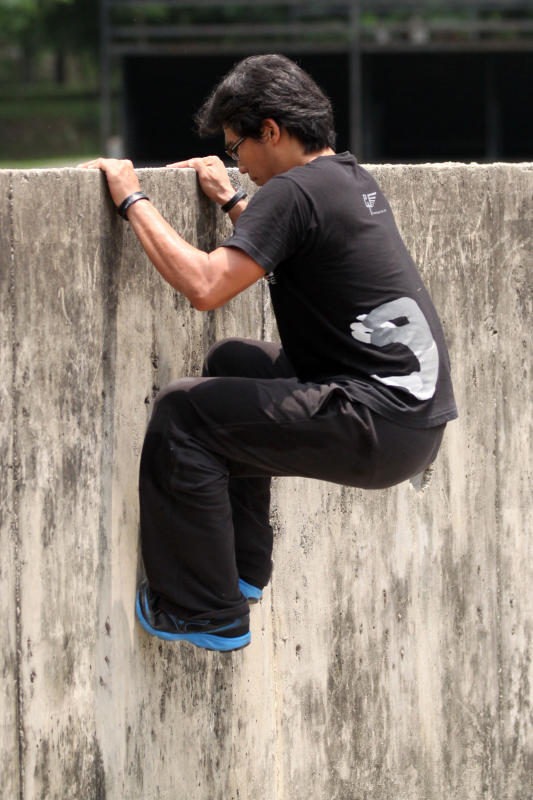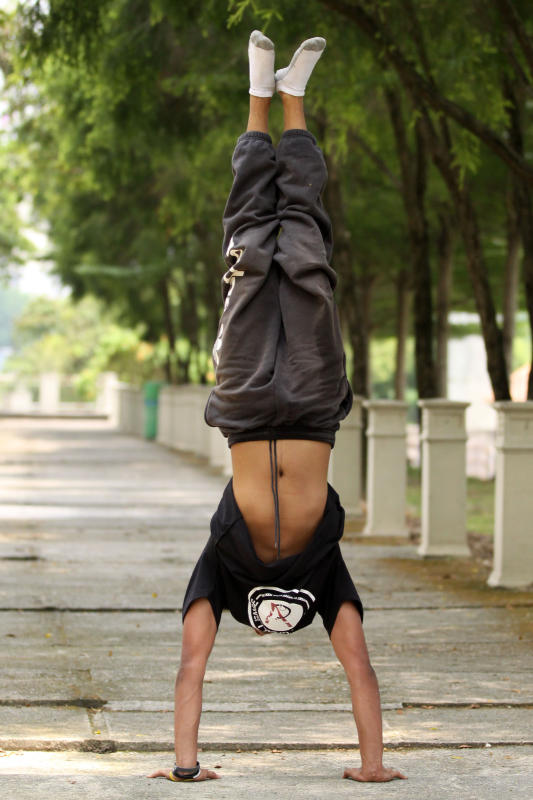By JOSHUA RALPH KAMIJAN, CHIN YU ZHENG and CHING KHER YEE
Photos by ABRAHAM HL YOKE
brats@thestar.com.my
Many of you may have heard the word “parkour” thrown around in conversations. But how many of you actually know what parkour is?
Some people might say that parkour is something that exists only in thrilling Hollywood action blockbusters, in which jumping from one tall building to another is made to seem like an easy task. There may be some truth in that, but of course parkour is more than just that.
Parkour is an activity where practitioners use a creative and exhilarating way to move themselves from one place to another depending only on their bodies and surroundings while overcoming obstacles in their environment.
“In parkour, we treat each and everyone the same, girl or guy, with total respect. We don’t care what background they come from, which race or religion they are, because in parkour we are one great family,” said Jordan J, a parkour practitioner.
Yes, many would agree that jumping from one obstacle to another is part of parkour, but that is merely a small scope of what it truly is.
So in what circumstance would a person be fit enough to perform parkour moves safely?
“You don’t cheat during practice. When you’re asked to jump across the stairs on one leg for 10 times, you do it exactly.
“If you cheat, it will show when you’re doing parkour, and you tend to get injuries more easily,” parkour enthusiast Daniel Lee warned.
Lee and his buddy Marcus Lim founded Team Ascend the first “parkour fitness school” in Malaysia earlier this year.
In a typical two-hour class conducted by Team Ascend, Lee is in charge of the first hour where he would guide the students to do conditioning exercises such as “crabwalking” from one end to another, jogging around the park, crawling on steps and jumping from various heights.
Many of the exercises used are tailored to train balance and stamina, as both factors are crucial for parkour practitioners.
After that, the students would go on to practise and learn parkour moves from Lim.
A few examples of parkour moves would be vaults, underbars, cat leaps, tic tacs and wall pass.
The trainers accompany each lesson of a movement with the philosophy behind it and how it relates to the perception of ourselves and the challenges in our lives.
Hence, students will not only be equipped with parkour techniques but also a better understanding of themselves.
Unlike certain sports where you can only practise at designated areas, parkour is completely flexible.
Anyone is able to do it anytime and anywhere; from parks and playgrounds and even on the streets!
On top of that, the benefits from learning parkour are endless.
“I have met many youngsters who practised parkour and benefited from it.
“They had overcome their fears and became more confident in themselves as an individual, allowing better identity development,” said Lim.
It is understandable that the only thing holding back most young people from learning parkour, is fear of injuring themselves. But in truth, parkour isn’t dangerous at all if you learn the right technique in performing those moves.
People also learn to know their limits and abilities while practising this art. They also learn to push beyond their own boundaries by stepping out of their comfort zones when learning new, difficult moves.
These lessons are not restricted to only pushing the physical limits, but also extends to other aspects of life such as building confidence, creativity and critical thinking, improving relationships and recognising opportunities.



Tell us what you think!